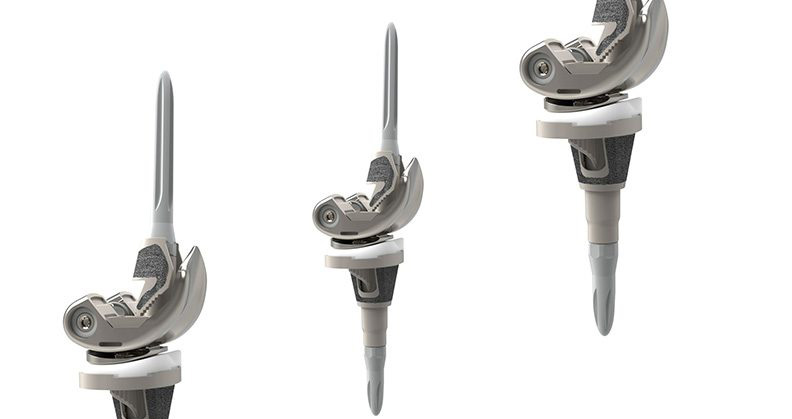
Zimmer Biomet, Stryker, DePuy Synthes and Smith+Nephew together account for nearly 70% of global joint replacement sales. The segment grew 7.5% and reached about $21.5 billion in 2023, according to ORTHOWORLD. The top four companies in the segment expect a strong 2024 as procedure demand and adoption of new implants and enabling technology persist. Each one aims to innovate the devices they offer to improve patient outcomes and maintain their position at the top of the market.
Zimmer Biomet will launch a stemless application of the Identity Shoulder System to spare bone in active patients, as well as a suite of technology to help capitalize on the shoulder replacement market.
“Materials, technology and surgical techniques are getting better,” said Nnamdi Njoku, President of Sports Medicine, Surgical, Upper Extremities & Restorative Therapies at Zimmer Biomet. “Patients are becoming more aware that they don’t need to live with shoulder pain and are opting to undergo surgery sooner.”
Identity is a convertible system that uses proprietary technologies, such as Versa-Dial for infinite humeral head offset placement and Alliance Glenoid for a broad range of glenoid options. These technologies aim to align each surgeon’s approach to an individual patient’s anatomy.
Stryker introduced the Triathlon Hinge system, which is designed to reduce the procedural steps of a Triathlon revision-to-Hinge conversion during surgery. Triathlon Hinge allows the surgeon to keep the original tibial baseplate and offers simplified instrumentation, decreasing the number of trays needed for the procedure from 15 to three. The approach is versatile and streamlined, which leads to ease of use and cuts down on time in the O.R.
“This system leverages the 20-year history of the Triathlon brand and design, but now offers versatility for the surgeon to move from a Triathlon TS to a Triathlon Hinge without changing the tibial baseplate,” said Lisa Kloes, Vice President and General Manager of Stryker’s Knees business. “It’s a big deal to have that conversion capability. Surgeons only have to touch the femur, which is better for the patient and makes for a faster procedure. There are a lot of advantages to the system, and we’re the only company that offers that level of versatility.”
DePuy Synthes is focused on providing end-to-end solutions for joint replacement surgery that focus on the value proposition of three key components: the implant, the surgical technique and the technology.
Sharrolyn Josse, Worldwide President of Joint Reconstruction at DePuy Synthes, highlighted the company’s efforts to optimize patient-specific alignment through the kinematic design of the ATTUNE Knee implant and the planning and precision of the VELYS enabling tech portfolio. “We’re considering how bone cuts, soft tissue balancing and surgical technique drive reproducibility and patient satisfaction,” she said.
ATTUNE, which is now in more than 2 million patients, is designed to match the natural kinematics of the knee. Joint replacement registries in the U.K. and U.S. show that use of the implant leads to quality outcomes and high patient satisfaction, according to Ms. Josse.
Smith+Nephew commenced full U.S. commercial availability of its AETOS Shoulder System for anatomic and reverse shoulder replacement.
AETOS features the Meta Stem, which is designed for stability with metaphyseal fixation and an inlay collar, preservation of bone and maintenance of patient anatomy.
The company noted that the system requires fewer steps for conversion between anatomic and reverse techniques and fewer instruments for primary anatomic and reverse placement, which simplifies the O.R. workflow and provides value for procedures performed in an ASC setting.
CL
Carolyn LaWell is ORTHOWORLD's Chief Content Officer. She joined ORTHOWORLD in 2012 to oversee its editorial and industry education. She previously served in editor roles at B2B magazines and newspapers.




